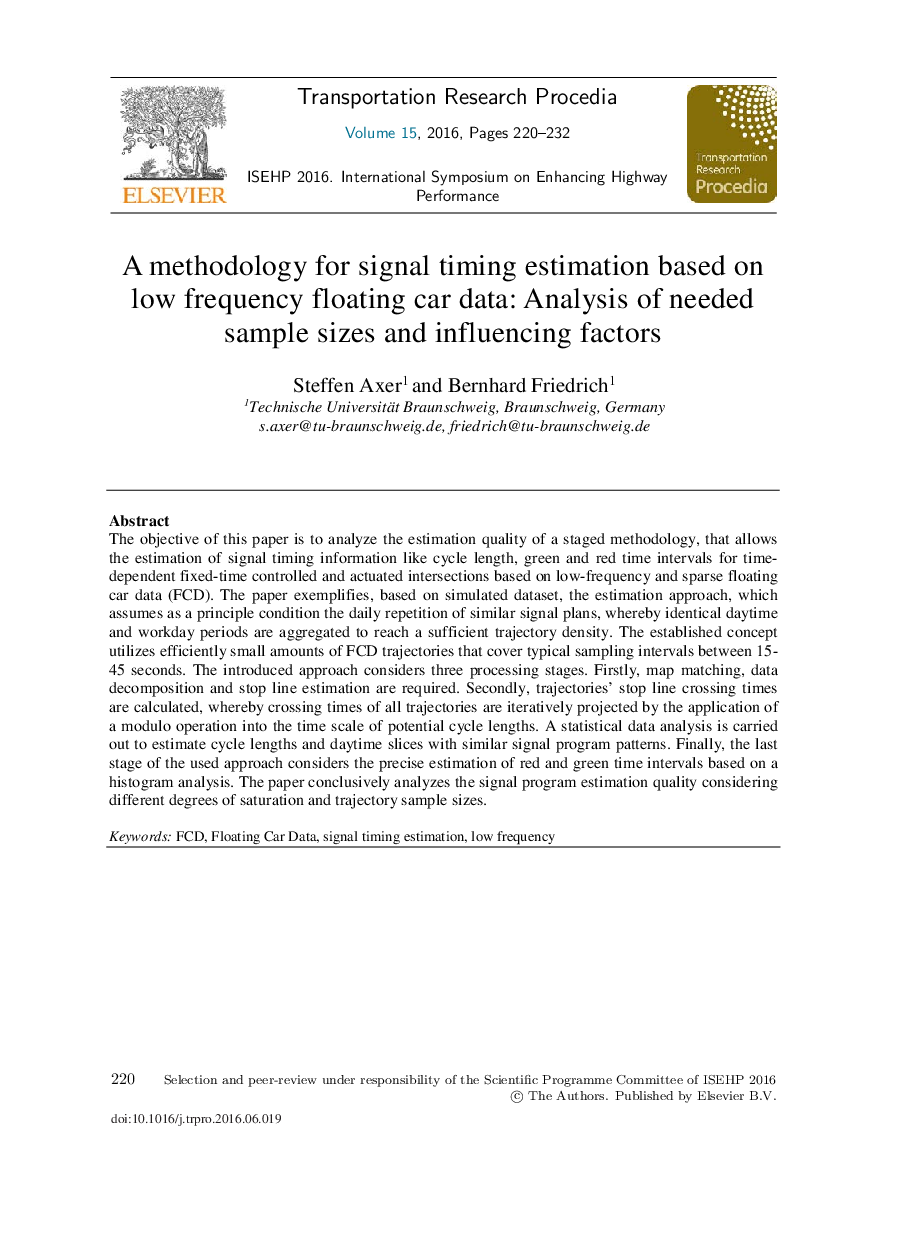| Article ID | Journal | Published Year | Pages | File Type |
|---|---|---|---|---|
| 1106110 | Transportation Research Procedia | 2016 | 13 Pages |
The objective of this paper is to analyze the estimation quality of a staged methodology, that allows the estimation of signal timing information like cycle length, green and red time intervals for time-dependent fixed-time controlled and actuated intersections based on low-frequency and sparse floating car data (FCD). The paper exemplifies, based on simulated dataset, the estimation approach, which assumes as a principle condition the daily repetition of similar signal plans, whereby identical daytime and workday periods are aggregated to reach a sufficient trajectory density. The established concept utilizes efficiently small amounts of FCD trajectories that cover typical sampling intervals between 15-45 seconds. The introduced approach considers three processing stages. Firstly, map matching, data decomposition and stop line estimation are required. Secondly, trajectories’ stop line crossing times are calculated, whereby crossing times of all trajectories are iteratively projected by the application of a modulo operation into the time scale of potential cycle lengths. A statistical data analysis is carried out to estimate cycle lengths and daytime slices with similar signal program patterns. Finally, the last stage of the used approach considers the precise estimation of red and green time intervals based on a histogram analysis. The paper conclusively analyzes the signal program estimation quality considering different degrees of saturation and trajectory sample sizes.
